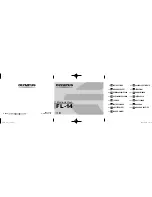
20
8.2 Timings
Notice
Overlapped mode can be switched off with setting the readout mode to
sequential shut-
ter
instead of
overlapped shutter
.
The image acquisition consists of two separate, successively processed components.
Exposing the pixels on the photosensitive surface of the sensor is only the first part of the
image acquisition. After completion of the first step, the pixels are read out.
Thereby the exposure time (t
exposure
) can be adjusted by the user, however, the time need
-
ed for the readout (t
readout
) is given by the particular sensor and image format.
Baumer cameras can be operated with two modes, the
Free Running Mode and the
Trigger Mode.
The cameras can be operated non-overlapped
1)
or overlapped. Depending on the mode
used, and the combination of exposure and readout time:
Non-overlapped Operation
Overlapped Operation
Here the time intervals are long enough
to process exposure and readout succes-
sively.
In this operation the exposure of a frame
(n+1) takes place during the readout of
frame (n).
Exposure
Readout
Exposure
Readout
8.2.1 Free Running Mode
In the "Free Running" mode the camera records images permanently and sends them to
the PC. In order to achieve an optimal (with regard to the adjusted
exposure time t
exposure
and image format) the camera is operated overlapped.
In case of exposure times equal to / less than the readout time (t
exposure
≤ t
readout
), the maxi-
mum frame rate is provided for the image format used. For longer exposure times the
frame rate of the camera is reduced.
Exposure
Readout
Flash
t
exposure(n)
t
flash(n)
t
flashdelay
t
flash(n+1)
t
readout(n+1)
t
readout(n)
t
exposure(n+1)
t
flash
= t
exposure
1)
Non-overlapped means the same as sequential.
Image parameters:
Offset
Gain
Mode
Partial Scan
Timings:
A - exposure time
frame (n) effective
B - image parameters
frame (n) effective
C - exposure time
frame (n+1) effective
D - image parameters
frame (n+1) effective
















































